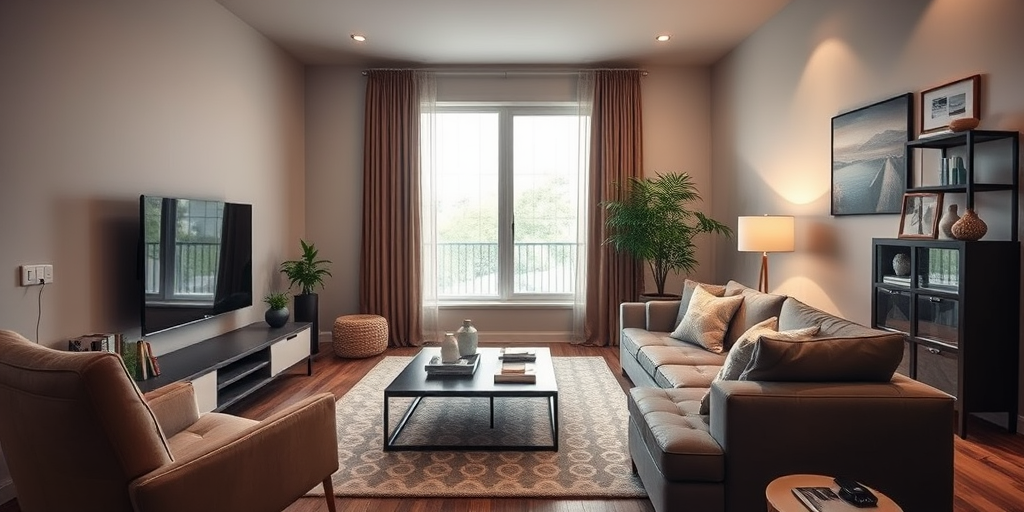Have you ever wondered if your home could practically run itself? As I discovered the incredible evolution of automated living systems, I couldn’t ignore the potential to transform a mundane space into an intelligent haven. I’m diving into the top 6 smart home devices that merge security, energy management, and convenience into one seamless digital ecosystem. In this post, I’ll reveal how these gadgets can upgrade your daily routine and spark innovative living experiences, challenging the outdated notion that traditional homes are enough. Let’s explore a future where your home truly works for you.
Detailed Reviews of Top 6 Smart Home Devices and Their Features

Reviewing smart home devices in detail highlights the convergence of functionality, design, and seamless system integration essential for modern living. I’ve found that understanding individual specifications—from the streamlined design of compact speakers to the enhanced surveillance offered by video doorbells—empowers users to tailor their automated households precisely to their needs. This detailed approach is crucial when comparing best automated household gadgets that integrate with Google voice assistant speakers and Amazon Echo smart audio systems.
These devices excel in multi-functionality, offering voice controls, security alerts, and intuitive monitoring features. For instance, the Ring Battery Doorbell delivers head-to-toe video coverage while the Amazon Echo Pop provides compact yet rich sound. Similarly, the Blink Mini 2 leverages 680p HD video and two-way audio for real-time communication, while the Amazon Echo Show 5 pairs an interactive 5.5-inch display with enhanced deep bass, ensuring a cohesive smart ecosystem.
Evaluating pros and cons, pricing hints, and compatibility with leading voice assistants is imperative. Some gadgets, though slightly higher in cost, offer advanced features like adaptive motion detection and over-the-air updates, whereas others prioritize user-friendly integration.
The trade-off between premium smart experiences and budget-conscious choices remains evident throughout the spectrum—from transformative TV experiences provided by the Google TV Streamer 4K to simple automation via the Amazon Smart Plug.
Overall, these smart home devices prove their worth by combining robust security features, audio-visual excellence, and seamless connectivity. Their ability to integrate into existing systems while offering future-ready functionality makes them top choices for transforming any living space.
Their comparative advantages over traditional home technology lie in not only the enhanced convenience they provide, but also in their capacity for energy management and remote control.
- Ring Battery Doorbell – enhanced security with 66% more vertical coverage
- Amazon Echo Pop – compact design with rich sound
- Blink Mini 2 – clear 680p video and two-way audio
- Amazon Echo Show 5 – interactive display and deep bass
- Google TV Streamer 4K – transformative TV experience
- Amazon Smart Plug – simple voice control integration
How to Choose the Best Smart Home Devices: A Buyer’s Guide
When selecting the ideal smart home device, it’s essential to focus on key factors such as compatibility with existing systems, ease-of-use, and cost efficiency. I evaluate products based on how seamlessly they integrate into an automated setup and offer user-friendly features. Devices like the Amazon Smart Plug highlight the importance of surge protection and reliable remote management options, ensuring that every addition to your ecosystem is both practical and future-focused.
Understanding connection protocols and user feedback is another vital step. I dive into technical specifications such as Wi-Fi standards, Bluetooth connectivity, and voice command supports to gauge performance. Equally important are user reviews that pinpoint real-world experiences with energy consumption tracking and setup simplicity.
- Compatibility with existing systems
- Energy efficiency and cost savings
- Security and remote access capabilities
- Ease of installation and setup
- Future-proofing and integration potential
Comparing these attributes before purchase empowers you to build a resilient automated living system. By cross-referencing technical details and customer insights, you can determine which smart home devices balance technological innovation with everyday practicality. This buyer-centric approach ensures your smart home not only meets current demands but is also prepared for emerging trends in automation and energy management.
Final Words
In exploring integrated smart kiosks, detailed reviews, and thorough comparisons, I navigated the dynamic world of home automation. My journey dissected security innovations, ease-of-use benefits, and future tech trends—all essential when embracing digital living systems.
The insights shared throughout this article empower us to appreciate the transformative potential of modern innovations. By highlighting the top 6 smart home devices, I’ve aimed to inspire proactive steps toward smarter, more connected homes.
FAQ
Q: What are the most essential smart home devices for beginners?
A: The core smart home devices include a smart speaker (like Amazon Echo or Google Nest), smart plugs, security cameras, and smart lighting. These offer basic automation and security features to start your smart home journey.
Q: How do different smart home platforms compare?
A: The main platforms are Amazon Alexa, Google Home, and Apple HomeKit. Alexa leads in device compatibility and skills, Google excels in voice recognition, while HomeKit offers superior privacy and security features.
Q: What should I consider when choosing smart home devices?
A: Focus on compatibility with your existing ecosystem, internet connection requirements, installation complexity, and long-term maintenance costs. Ensure devices support your preferred voice assistant platform.
Q: How can smart home devices save money?
A: Smart thermostats, LED bulbs, and automated plugs reduce energy consumption through scheduling and usage monitoring. Smart security systems may also lower home insurance premiums.
Q: Which smart home security devices offer the best protection?
A: Video doorbells, security cameras with motion detection, smart locks, and connected alarm systems provide comprehensive protection. Look for devices with real-time alerts and cloud storage options.
Q: How difficult is it to install smart home devices?
A: Most modern smart devices feature wireless connectivity and user-friendly setup through mobile apps. Many require only basic DIY skills, though some may need professional installation.
Q: What’s the future of smart home technology?
A: Smart homes are evolving toward AI-driven automation, enhanced energy management, improved security features, and seamless device integration. Expect more sophisticated sensors and predictive capabilities.